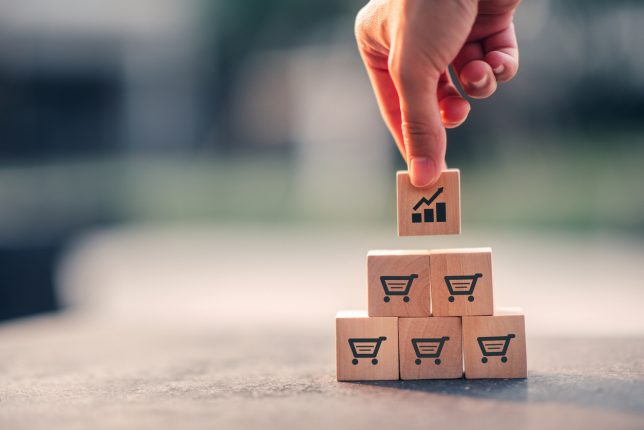- August 5, 2022
- Posted by: simba001
- Categories: Business Insights, Retail POS Insights

Your profit margin is a metric that should always be on your radar, and for good reason: it answers critical questions about your business, like whether or not you’re making money or if you’re pricing your products correctly.
It’s important to note, though, that your profit margin isn’t just something you should measure; it’s a metric that you should continuously improve.
Your profit margin is a metric that should always be on your radar, and for good reason: it answers critical questions about your business, like whether or not you’re making money or if you’re pricing your products correctly.
Avoid markdowns by improving inventory visibility
Markdowns are notorious profit-killers, so avoid them whenever possible. How do you do that? Start by improving how you manage your inventory. You should always have a handle on the merchandise you have on hand, as well as what your fast and slow-movers are. This will help you make better decisions around purchasing, sales, and marketing, allowing you to sell more products and reduce the need for markdowns.
Streamline your operations and reduce operating expenses
In many instances, Retailers often focus on pricing strategies when searching for ways to increase profits, but most should try to start with streamlining operations.
“First, cut overtime and excess staffing as much as possible, then focus on areas of waste. Minimize supply: spend as little as possible, and ditch the fancy printed shopping bags, tissue fill, and excess packaging wherever possible. If you’re not using an efficient point-of-sale to tie inventory, sales, and marketing under one system, consider making a switch to a low-cost system. This makes your entire store and staff run more efficiently.”
Another great way to streamline your operations is to automate specific tasks in your business. By putting repetitive activities on autopilot, you can reduce the time, manpower, and operating expenses required to run your business.
Increase your average order value
Increasing the basket size or average order value (AOV) from shoppers already in your store is a great way to improve your profits. You’ve already invested in getting them to your location; now go and find ways to maximize their spend.
Start with upselling and cross-selling. “someone who makes a purchase from you has already been qualified. They have engaged with your brand and, while it may sound obvious, they are significantly more receptive to offers and product advertising. For that reason, it makes complete sense to encourage them to spend more.”
Increase your prices
Raising your prices will enable you to make more money on each sale, thus widening your margins and improving your bottom line. Many retailers, however, balk at the prospect of increasing their prices out of fear that they’ll lose customers.
We wish we could give you hard and fast rules when it comes to pricing, but the fact is, this decision depends on each company’s products, margins, and customers. The best thing to do is to look into your own business, run the numbers, and figure out your pricing sweet spot.
And consider what types of customers you want to attract. Do you want to sell to shoppers would take their business elsewhere just because they could get an item for less, or would you rather attract customers who don’t base their purchase decisions solely on price?
On top of considering basic pricing components like your costs and margins, look at external factors such as competitor pricing, the state of the economy, and the price sensitivity of your customers.
Identify and eliminate waste
Finding areas of waste in your business — and eliminating those wastes — can save money and add to your bottom line.
The world of lean manufacturing recognizes the 8 types of wastes that are costing businesses money. While the concept largely applies to manufacturers, retailers can also apply the concept to their operations.
Put it simply, the 8 types of wastes can be summarized using the acronym “D-O-W-N-T-I-M-E”:
D – Defects (defective products due to issues like quality control, poor handling, etc.)
O – Overproduction (ordering or making more merchandise than necessary)
W – Waiting (unplanned downtime, absences, unbalanced workloads, etc.)
N – Not utilizing talent (not fully leveraging the skills or potential of your team, having employees do the wrong tasks, etc.)
T – Transportation (unnecessary movements of products — e.g., unnecessary shipping, inefficient movement from one store to the next)
I – Inventory excess (surplus or dead stock sitting in your backroom)
M – Motion waste (unnecessary movements of people — e.g., inefficient store layout)
E – Excess processing (having to process, return, or repair products that don’t meet the customer’s needs)
Go through each of these components individually and see how they apply to your business. If these types of wastes are present, find ways to reduce or eliminate them.
At SimbaPOS, we provide Affordable, Reliable and Easy To Use POS System for retail business. Let’s talk on 0700 001779 to see how we can work together to help you Manage and Grow your business.





